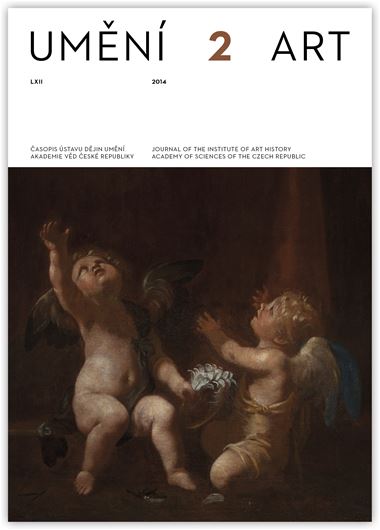Radka Tibitanzlová – Štěpán Vácha
Nově nalezené dílo Karla Škréty. Sv. Antonín Paduánský s Ježíškem a obrazová výzdoba kostela hybernů na Novém Městě pražském
The former Church of the Immaculate Conception of the Virgin Mary at the Monastery of Irish Franciscans in Prague’s New Town district was renowned for the superb decorative paintings in its aisle chapels, which were paid for by benefactors from the high and low Czech nobility. The altar retables and richly stuccoed walls were adorned with paintings and frescos, many of which were done by top artists in Bohemia. One example is a recently discovered altarpiece by Karel Škréta depicting St Anthony of Padua with the Infant Jesus, which originally adorned the altar in the funeral chapel of the family of Losy of Losinthal. After the monastery and church were shut down in 1786, the painting moved to the parish Church of the Birth of St John the Baptist in Čížkov in western Bohemia, where it remained forgotten until archive research carried out by one of the co-authors of this study led to its discovery in 2011. Further extensive research on sources produced new findings on the paintings that originally decorated the Hibernian church as a whole and helped to develop a full appreciation of the significance of Škréta’s body of work. It appears likely that the painting was commissioned along with two other paintings by Škréta that are similar in format, The Baptism of Christ and The Conversion of St Paul, dated to 1659. These two smaller canvases were set in stucco frames over the side entrances into the Losy chapel. The mystical vision of a saint, a popular motif in post-Tridentine iconography, is assessed in the context of Škréta’s work in reference to three preparatory studies; attention is also devoted to the later reception of the painting by Jan Jiří Heinsch. Also discussed are the relations between Karel Škréta and Jan Antonín Losy, Count of Losinthal (circa 1600–1682), who commissioned the work and whose portrait the artist in all likelihood also painted. The article closes with a discussion of the fate of Škréta’s painting from the late eighteenth century to the present day.
Full-text in the Digital Library of the Czech Academy of Sciences:
https://kramerius.lib.cas.cz/uuid/uuid:7bcc8c5d-9152-4f60-8cad-6f30c62c8b54
< back

